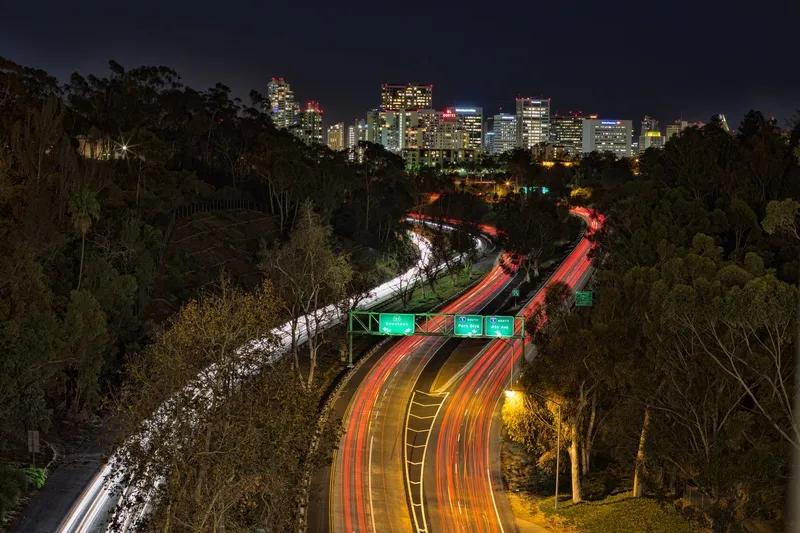Although San Diego County may see a downturn new freeway infrastructure projects during 2014, many projects, from rail to highways and cycle paths, are still in the pipeline for 2014, according to the region's transportation planning agencies.
Laurie Berman, district director for the regional office of the California Department of Transportation, said last week that Caltrans' focus is transitioning from general purpose lane expansions to more traffic management. The new direction is meant to provide trav
February 21, 2014
Read time: 3 mins
Although San Diego County may see a downturn new freeway infrastructure projects during 2014, many projects, from rail to highways and cycle paths, are still in the pipeline for 2014, according to the region's transportation planning agencies.
Laurie Berman, district director for the regional office of the923 California Department of Transportation, said last week that Caltrans' focus is transitioning from general purpose lane expansions to more traffic management. The new direction is meant to provide travellers with more choices and more information, she said, while maintaining or updating existing infrastructure.
"Much of our work is about smart management of the transportation system," Berman said.
In the past year, she said, Caltrans has developed technology to provide expanded messaging for highway travel times, including changeable message signs on southbound Interstate 15 and northbound state Route 163.
Comment from travellers has been positive since adding the features in 2013, Berman said, adding that Caltrans' QuickMap mobile website allows travellers to see traffic and construction information on their routes in real time.
New construction in 2014 from Caltrans and the San Diego Association of Governments, some of which has already begun, is scheduled to include the bridge seismic retrofit and rehabilitation project on state Route 163, and construction of the Centerline Bus Rapid Transit Stations on Interstate. Both projects are estimated to cost a total of nearly US$38 million; the bridge retrofit and rehabilitation is scheduled for completion by the summer and the bus rapid transit stations are set to be completed by summer 2016.
Traffic-lane additions are on the 2014 list, such as the US$100 million construction of a four-lane expressway on state Route 76, which was already under construction before the year began and is expected to be complete by winter 2017.
In all, Caltrans plans to continue or start work on roughly US$730 million in major projects, including the US$86 million continuing construction of express lanes on the north segment of Interstate 805, from roughly state Route 52 to Mira Mesa Boulevard which is expected to be complete by winter 2015. Next in line would be the US $76.5 million construction of connectors on state Route 11 to state Route 905, and the construction of state Route 11 to Enrico Fermi Drive.
Other projects include continuation of the US$54 million south segment of express lane additions to I-805 from East Palomar Street to the I-805/state Route 94 connector and the related construction of the East Palomar Street direct access ramp on I-805, estimated to cost US$43 million.
SANDAG also aims to build up its bus rapid transit system in the South Bay this year, and will award projects to contractors this summer. The projects involve building BRT lanes in segments, with the first from Palomar Street to Olympic Parkway this fall.
"BRT is a key component — one of the ways we provide more choices for travellers," said Gary Gallegos, executive director of SANDAG. "A lot of those BRT facilities end up downtown [San Diego]."
Rail projects include completing upgrades to the San Diego Trolley's Blue Line and he planned Mid-Coast Trolley Extension Project which will extend the trolley north of Interstate 8 for the first time, with a line from UCSD to University Towne Centre.
"We have a pretty aggressive schedule," Gallegos said. "We hope to start this trolley extension by 2015."
Laurie Berman, district director for the regional office of the
"Much of our work is about smart management of the transportation system," Berman said.
In the past year, she said, Caltrans has developed technology to provide expanded messaging for highway travel times, including changeable message signs on southbound Interstate 15 and northbound state Route 163.
Comment from travellers has been positive since adding the features in 2013, Berman said, adding that Caltrans' QuickMap mobile website allows travellers to see traffic and construction information on their routes in real time.
New construction in 2014 from Caltrans and the San Diego Association of Governments, some of which has already begun, is scheduled to include the bridge seismic retrofit and rehabilitation project on state Route 163, and construction of the Centerline Bus Rapid Transit Stations on Interstate. Both projects are estimated to cost a total of nearly US$38 million; the bridge retrofit and rehabilitation is scheduled for completion by the summer and the bus rapid transit stations are set to be completed by summer 2016.
Traffic-lane additions are on the 2014 list, such as the US$100 million construction of a four-lane expressway on state Route 76, which was already under construction before the year began and is expected to be complete by winter 2017.
In all, Caltrans plans to continue or start work on roughly US$730 million in major projects, including the US$86 million continuing construction of express lanes on the north segment of Interstate 805, from roughly state Route 52 to Mira Mesa Boulevard which is expected to be complete by winter 2015. Next in line would be the US $76.5 million construction of connectors on state Route 11 to state Route 905, and the construction of state Route 11 to Enrico Fermi Drive.
Other projects include continuation of the US$54 million south segment of express lane additions to I-805 from East Palomar Street to the I-805/state Route 94 connector and the related construction of the East Palomar Street direct access ramp on I-805, estimated to cost US$43 million.
SANDAG also aims to build up its bus rapid transit system in the South Bay this year, and will award projects to contractors this summer. The projects involve building BRT lanes in segments, with the first from Palomar Street to Olympic Parkway this fall.
"BRT is a key component — one of the ways we provide more choices for travellers," said Gary Gallegos, executive director of SANDAG. "A lot of those BRT facilities end up downtown [San Diego]."
Rail projects include completing upgrades to the San Diego Trolley's Blue Line and he planned Mid-Coast Trolley Extension Project which will extend the trolley north of Interstate 8 for the first time, with a line from UCSD to University Towne Centre.
"We have a pretty aggressive schedule," Gallegos said. "We hope to start this trolley extension by 2015."








